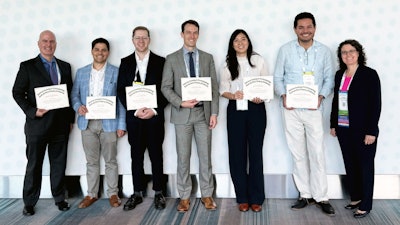Behind the Peer Review: A Conversation with Star Reviewer Connor Massey, MD
Dr. Massey leverages his research expertise in inflammatory sinonasal conditions to advance the field through peer excellence.
Connor Massey, MD, assistant professor of otolaryngology-head and neck surgery at the University of Colorado, is a 2024 Star Reviewer* for the OTO Journals. He began peer reviewing for the OTO journals through the Resident Reviewer Development Program approximately five years ago. Since then, he has established himself as a dedicated reviewer, contributing his expertise in inflammatory sinonasal conditions and chronic rhinosinusitis research. Dr. Massey shares his best practices for success as a reviewer.
What is your area of research focus within otolaryngology-head and neck surgery?
I'm an academic rhinologist. I completed a NIDCD T32 research track residency training program at the University of Colorado, which I've since returned to as faculty after completing fellowship at the University of Utah. My main research interests lie in inflammatory sinonasal conditions, particularly chronic rhinosinusitis.
Tell us about your path to becoming a Star Reviewer.
I started reviewing as part of the Journal's Reviewer Development Program about 5 years ago. This is a fantastic mentorship opportunity for residents and a great way to get involved with the journals.
 2024 Star Reviewers (Left to Right): Richard K. McHugh, MD, PhD, Mark A. Arnold, MD, Conner J. Massey, MD, Patrick T. Tassone, MD, Janet S. Choi, MD, MPH, Marco A. Figueroa Morales, MD, MSc, MEd with Editor-in-Chief Cecelia E. Schmalbach, MD, MSc. Not pictured: Jakob L. Fischer, MD, Christopher W. Noel, MD, PhD, and Ahmad R. Sedaghat, MD, PhD (Star Reviewer Emeritus)
2024 Star Reviewers (Left to Right): Richard K. McHugh, MD, PhD, Mark A. Arnold, MD, Conner J. Massey, MD, Patrick T. Tassone, MD, Janet S. Choi, MD, MPH, Marco A. Figueroa Morales, MD, MSc, MEd with Editor-in-Chief Cecelia E. Schmalbach, MD, MSc. Not pictured: Jakob L. Fischer, MD, Christopher W. Noel, MD, PhD, and Ahmad R. Sedaghat, MD, PhD (Star Reviewer Emeritus)
How do you balance quality reviews with clinical demands amid your busy schedule?
Part of being a star reviewer is carrying out a minimum number of reviews (in addition to the high quality of your reviews). How do you make time for peer review among your other obligations? I usually try to do my reviews on OR days during case turnovers. Barring that, I'll usually find time in the mornings while having coffee before my workday starts.
What wisdom would you share with the next generation of medical reviewers?
I think to a certain degree, you have to enjoy the review work. I love doing peer review because I almost always learn something, whether it's about an area I'm less familiar with or a new research tool or technique. It feels exciting to engage with cutting-edge science.
Tell us about one of your own publications of which you are particularly proud.
I received an AAO-HNSF CORE grant during residency that resulted in a number of publications related to AI-based sinus CT analysis. I am probably most proud of my initial publication from that work, "Clinical validation and extension of an automated, deep learning-based algorithm for quantitative sinus CT analysis" (https://pubmed.ncbi.nlm.nih.gov/36538385/).
*The Star Reviewer recognition is awarded annually to the top reviewers across the OTO Journals; Star Reviewers must meet criteria for both the volume and excellence of their reviews. Eligible Star Reviewers are invited to join the journals' Editorial Boards in recognition of their service, expertise, and commitment to improving research in the specialty. To learn more about the benefits of becoming a peer reviewer for the OTO Journals, visit Why Peer Review for the OTO Journals.









